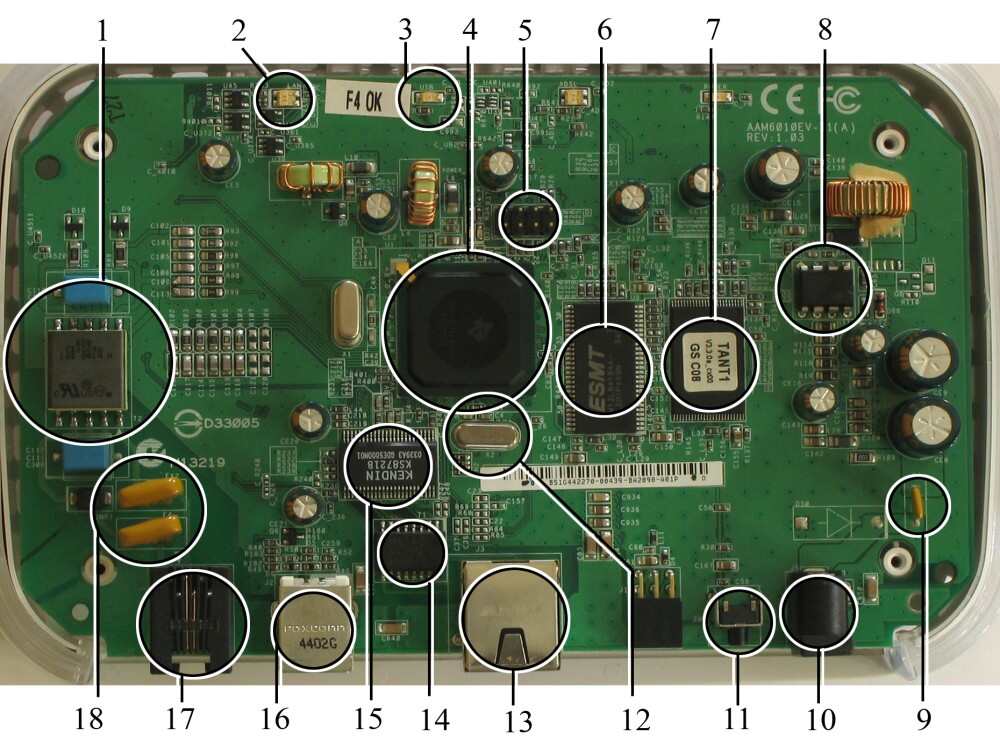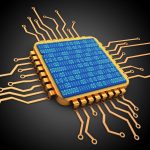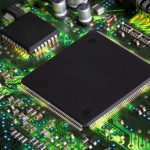Embedded programs must work closely with the specialized components and custom circuitry that makes up the hardware. Unlike programming on top of a full-function operating system, where the hardware details are removed as much as possible from the programmer’s notice and control, most embedded programming acts directly with and on the hardware. This includes not only the hardware of the CPU, but also the hardware which makes up all the peripherals (both on-chip and off-chip) of the system. Thus an embedded programmer must have a good knowledge of hardware, at least as it pertains to writing software that correctly interfaces with and manipulates that hardware. This knowledge will often extend to specifying key components of the hardware (microcontroller, memory devices, I/O devices, etc), and in smaller organizations will sometimes go as far as designing and laying out (as a printed circuit board) the hardware. An embedded programmer will also need to have a good understanding of debugging equipment such as multimeters, oscilloscopes, logic analysers and the like.
Another difference from general purpose computers is that most (but not all) embedded systems are quite limited as compared to the former. The microcomputers used in embedded systems may have program memory sizes of a few thousand to a few hundred thousand bytes rather than the gigabytes in the desktop machine, and will typically have even less data (RAM) memory than program memory. Further, the CPU will often be smaller 8 and 16 bit devices as opposed to the 32 bit and larger devices found in a desktop (although small 32-bit microcontrollers are now under a dollar in moderate quantities, which is amazingly amazing). A smaller CPU word size means, among other things, that a program will require more instructions (and thus more clock cycles) than an equivalent program running on a CPU with a larger word size. And finally, the speed at which smaller microcontrollers run is much less than the speed at which a PC runs. Typical smaller microcontroller clock rates are between 1 and 200 MHz, not the GHz rates of PCs.
What Are The Differences Between Microcomputer, Microprocessor And Microcontroller?
A microprocessor is usually understood to be a single-chip central processing unit (CPU), with the CPU being the “brains” of a computer – the part of the computer that executes program instructions. A microcomputer is any computer built around a microprocessor, along with program and data memory, and I/O devices and other peripherals as needed. A microcontroller (often shortened to μC in this tutorial) is a single chip device which has built onto the chip not only a microprocessor but also on the same chip, nonvolatile program (ROM) and volatile data (RAM) memory, along with useful peripherals such as general-purpose I/O (GPIO), timers and serial communications channels. Thus it follows that all microcontrollers are microcomputers, but not all microcomputers use microcontrollers.
In smaller embedded systems it is most common to use microcontrollers rather than microprocessor-based designs since microcontrollers give the most compact design and the lowest hardware cost. Larger embedded systems, on the other hand, may use one or more microprocessors if a microcontroller of suitable speed and functionality cannot be found. This can extend to the use of industrial PCs and even more powerful hardware. It is also possible to include both microprocessors and microcontrollers in a complex embedded system. The only real rules are, use whatever device(s) fit the task, given the constraints on budget, availability, time, tools, etc.
It should also be pointed out that with most microcontrollers it is possible to add external memory and peripherals, should the on-board mix not take care of all the system needs. When it makes sense to add such external devices, as opposed to choosing a larger microcontroller with the needed resources on-board, is a choice that needs to be made on an individual design basis.
What Is An N-Bit Cpu/Microprocessor/Microcontroller?
There is some discussion about what it means to call a device an N-bit processor, but it’s fairly obvious in most cases. If the device can perform most of its data manipulation instructions on data words up to N bits in size, the device is an N-bit processor. By way of example, a device may have a full set of instructions that can operate on 8 bit data, along with a few instructions that operate on 16 bit data. That device should be considered an 8-bit design, even if the marketing department says otherwise and calls it a 16-bit chip.
By volume, 8-bit microcontrollers are the biggest segment of the embedded market. Many applications simply don’t need any more power, and never will. 16-bit devices are more powerful, but they are squeezed between the 8-bit devices on the low end and the 32-bit devices on the high end. 32-bit devices are at the high end of the embedded spectrum for all but the most complex or high-performance designs, but they are moving ever downward in price.


